You put a lot of thought into forging smart content strategies for your clients and producing great content.
However, some significant questions loom:
- Is the content reaching enough potential buyers?
- Are the brands you work with realizing the ROI they seek?
- If not, will they continue placing their trust in your services?
These questions beget more questions:
- Does your content marketing plan include a solid content distribution strategy?
- Are you investing the time and effort it takes to rise above the noise on the most relevant content distribution channels?
Given the immense overload of content pouring into cyberspace each day, it’s dangerously wasteful to NOT have an effective content distribution plan in place to amplify reach.
I hereby call all content marketers to face an undeniable reality:
Creating great content is only the beginning. You’re unlikely to see any results until you master content distribution.
But… there are soooo many media channels now. It’s not like you can just click the content distribution network button and watch the traffic roll in and conversions spike.
What you can do is look at each “suit” in the content distribution deck of cards—that is, paid, earned, shared, and owned—and pursue the content distribution strategies you believe to have the highest potential to produce winning results.
Want the magic formula? Sorry, no such thing exists. However, what does exist—and what I hope you’ll find immensely useful—is this guide to content distribution strategy and long list of tactics and ideas.
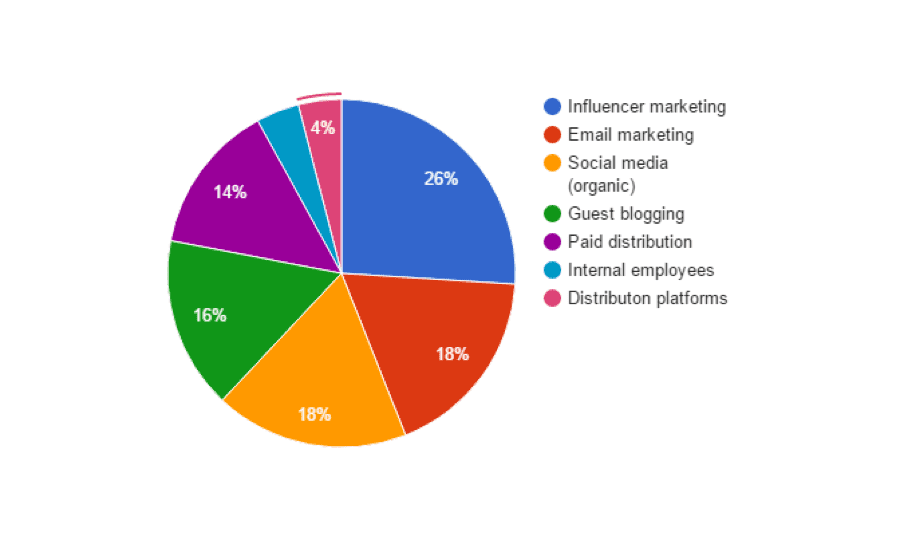
A 2018 survey by MailMunch shows how the content distribution is split across seven broad digital content distribution strategies. Interestingly, four consume more than three-quarters of the pie.
Online advertising
Content discovery networks
Paid distribution took fifth place in the study cited above. If you want to give your clients assurance their content can reach X number of people and earn Y clicks for Z dollars, a wide scale content distribution platform such as Taboola should top your go-to list in the paid category.
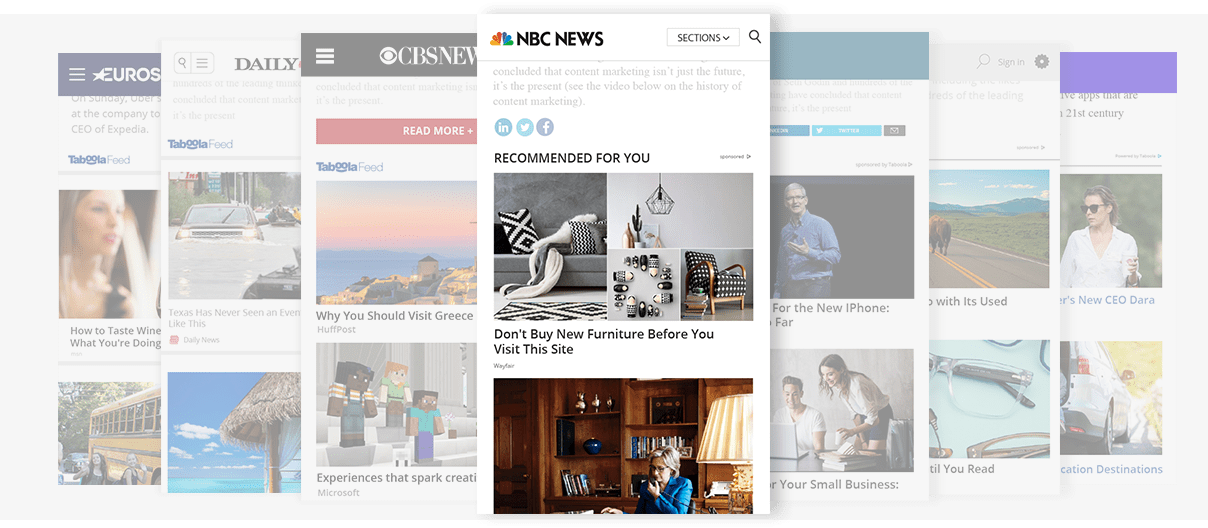
Taboola isn’t the only content discovery platform but is trusted by thousands of brands because it reaches more than one billion relevant users monthly via a network of premium publishers.
How to Start a Discovery Campaign From Scratch
Sponsored content
As defined in our guide to advertising terms, sponsored content is a form of native advertising that appears in an online publication and resembles the publication’s editorial content but is paid for by an advertiser and labeled as such.
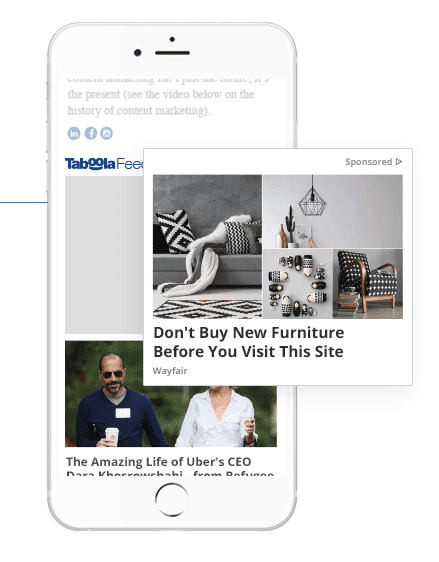
Sponsored content is a type of native advertising because it’s, well, sponsored. You can think of it as a content creation and distribution strategy at the same time.
Google Ads
Google Ads (formerly Google AdWords) falls in the “search engine marketing” (SEM) category and is the most used network for paid content promotion.
The network targets audiences based on keywords entered when performing searches and collects fees based on a pay-per-click (PPC) model. Ads appear across 2 million websites on its display network and on the results pages of billions of daily searches.
Retargeting ads
Retargeting (or remarketing) works in different ways depending on the content distribution network you’re using, but the general idea is to target people who have already shown interest in your brand and bring them back to your website.
Facebook ads
Facebook has a massive audience and for many reasons—targeting, efficiency, flexibility and more—Facebook advertising remains a favorite choice for paid content distribution. It’s wise to invest your Facebook ad dollars in your best performing content.
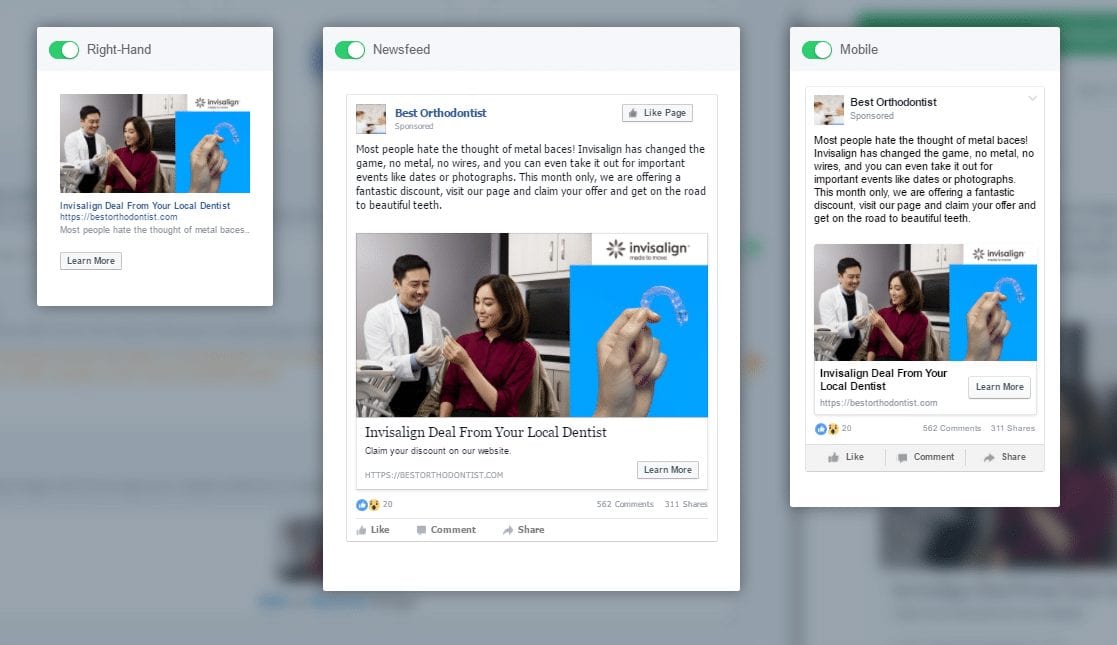
Contrary to the most popular form of Google Ads, Facebook ads are visual.
Of course, in addition to Facebook, there are many paid content promotion programs across the social sphere, including:
Instagram ads
Instagram offers ads in a variety of visual forms including video. You must have a Facebook Page and business profile on Instagram to get started.
Pinterest ads
Pinterest claims 61% of Pinners have made a purchase after seeing business content on Pinterest. Ads are part of the native Pinterest experience and look like regular pins.
LinkedIn ads
LinkedIn ad formats include sponsored content, sponsored InMail and text ads. Because LinkedIn is a business-only network and its ad programs are highly targetable, many B2B brands promote various types of content on the network.

Twitter ads
Twitter’s also strong in the ad targeting department and requires no minimum campaign spend.
YouTube ads
Want to reach teenagers? Check out YouTube’s dominant position and consider its video advertising platform. Of course, there’s YouTube content about everything so you’ll find the audience you seek—young or otherwise. Plus, with YouTube, you pay for a view only if the viewer watches for 30 or more seconds.
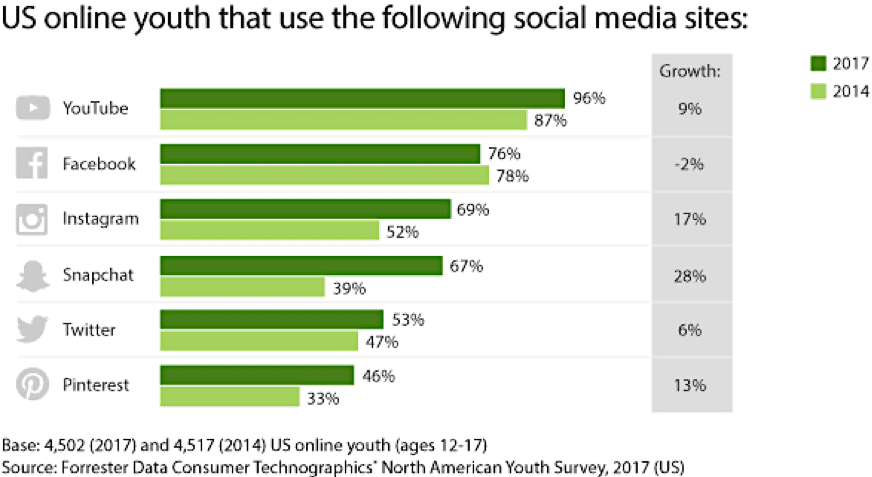
Influencer marketing
Should a content distribution planner file influencer marketing under paid, earned, owned or shared? That’s a tough one. You saw in the data presented earlier, influencer marketing now carves the largest slice of the content distribution strategy pie.
However, it’s done—and defined—in different ways. I’ll simplify here by separating paid from “organic.”
Paid influencer marketing
Like it or not, the practice of paying people with sizable social media followings to promote a brand has become a big business. According to an April 2017 study from ANA and PQ Media, it’s projected to reach $101 billion by 2020.
While paid influencer marketing can be a bit dodgy, there are indeed many above board content distribution services, tools, and networks that manage the process of partnering with influencers.
So, if your content’s a cookbook, you may want to put some prominent cooking experts on the payroll. If you have a fashion guide to distribute, I do indeed believe there are bloggers, Instagrammers and YouTubers out there that would be ideal to help expand your reach.
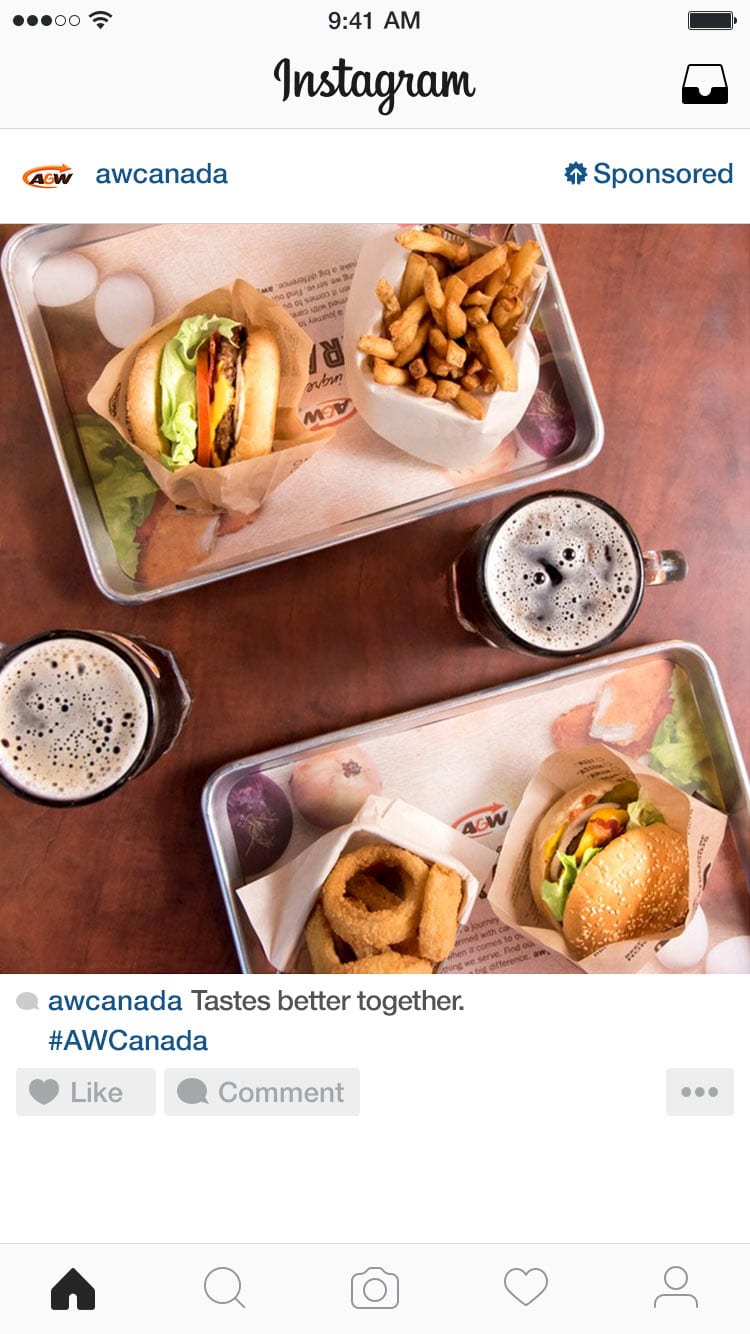
Organic influencer marketing
Another take on influencer marketing does not involve compensating marketing partners. It’s person-to-person PR.
You invest time and effort into building relationships with real influencers whose expertise comes from a track record of expressing objective and highly credible points of view. The rewards come in the form of mentions, backlinks, endorsements, recommendations, and perhaps, mutually beneficial efforts to create and/or promote content.
You work hard generate leads and email lists for clients, which is a marketing asset you do indeed own. In fact, the quality of your content is probably what most affects the size and growth of your list. Are you using it effectively for content promotion? There are numerous ways to do so, including:
Email updates
Perhaps one of the most simple and inexpensive content distribution strategies is to alert your subscribers when you’ve published new content. Doing so can be easily accomplished with most marketing automation platforms.
Newsletters or digests
Your email-based content distribution strategy can also include digests or email newsletters that list multiple content assets. Handle this however it suits you (and your publishing schedule):
- What we published this week/month/quarter year
- Highlights from a specific time frame
- A collection of content covering a specific topic
Lead nurturing
Marketing automation obviously provides insights into what prospects and customers read and download. You can apply this data to promote related content. To put this simply, you could respond to readers by sending notices that say “if you liked that you may like this.”
Email signatures
An amazingly simple content distribution tactic is to promote new, timely or even evergreen content assets via email signatures. Ask your clients to update their email signatures with the latest posts.
The website and blog
There are an enormous number of opportunities to promote your client’s content on their brand’s website and blog.
The sidebar
Does the company’s site have a sidebar? It can be the ideal place to showcase “most popular posts” or present any type of content by category, recency, or popularity.
CTAs in your posts and pages
Promote related content in your posts and pages. This can be done in a variety of ways with graphics, callout boxes, simple links and more that function as calls-to-action (CTAs).
At the bottom of the page
Free plugins (such as Disqus) and value-added features in content management systems and themes make it easy to automatically append your pages and posts with listings and links to additional relevant content.
Sticky stuff
All sorts of applications make it easy to promote content on websites with welcome screens, pop-ups or slide-in offers invoked by exit intent, scrolling or a specific time on page. Also, you can create a sticky content promotion by installing a header bar.
Thank you page
Here’s a tactic you may be overlooking. The site and brand likely has various lead collection tactics in play and subsequently delivers thank you pages. These pages (and triggered emails that may follow) can promote any or all content you deem relevant and potentially useful in the sales funnel.
Chat and chatbots
I’m thinking: (1) you’ve noticed the immense popularity of on-site chat options, (2) you realize some are “manned” by humans while others employ bots, and (3) you’ve never considered using this hot and relatively new channel for content distribution.
Go for it.
I would think it’s easy to imagine the many opportunities to offer visitors and customers helpful content when they come in search of answers.
Podcasts
If your client has a podcast and has created a section on their website to promote it, each episode is an opportunity to promote relevant content. Create links to the content in the show notes or transcripts.
Earned opportunities
Where can you distribute content beyond social media networks, the channels you own and control, or those you pay for exposure on? It’s likely there are more answers than you realize.
You shouldn’t expect to pay for any of these strategies so they qualify as earned or shared media.
Guest posts
I’ve always considered guest blogging one of the best and (potentially) most authentic ways to promote your brand, brands you represent and relevant content. It’s how I built my audience.
But guest blogging can be seedy too. Far too often, brands and the agencies that represent them make shady and insincere pitches.
An effective guest blogging strategy calls for allying with relevant sites and delivering relevant content for the audience of the website hosting your posts. Be a good guest and deliver value and it’s unlikely anyone will object to you promoting useful content.
Syndication
Content syndication is the process of pushing and publishing content to third-party sites for republication. In a way, it can be considered an extension of guest blogging, but can also add automation to the process making expanding the digital footprint of your digital content much less work.
Online publishing platforms
Online publishing platforms—Medium, HubPages, Listly, LinkedIn’s resident platform, Pulse, and many more—are sites where members can publish or republish content easily—without editors playing gatekeeper roles.
Communities and specialty sites
Vertical markets tend to have specialty sites and all kinds of community-based information sharing and activity. For example, Houzz is a massive draw for those interested in home renovation and design. Zest.is is a rising star in the marketing business. Whatever industry your clients may be in, chances are there are community based sites worth considering for content promotion.
Social media groups
Both LinkedIn and Facebook enable you to create member-based social media groups on whatever topic you decide. Those that are active and rally around a common area of interest are prime candidates to share content with.
Quora
Question and answer communities seem to come and go, but Quora has stood strong for years. All types of questions on every conceivable topic are posted on Quora giving content creators a free, easy and sometimes ideal, opportunity to post content and/or links.
H/A/R/O
HARO, an acronym for “Help a Report Out,” isn’t a destination for content, but a service that connects journalists and bloggers with relevant expert sources and enables brands to tell their stories. The HARO website claims it distributes more than 50,000 journalist queries from respected media outlets each year.
PR newswires
Got news? Press release distribution services, such as PRNewswire, offer direct, delivery into editorial systems and newsrooms of major media organizations and trade publications.
Reddit continues to claim to be “the front page of the Internet.” The massively popular site (or message board) offers a continuously updated feed of breaking news, stories, pics, memes, and videos. Content submitted by members is voted up or down by their peers. Subreddits are forums dedicated to a specific topic on the website. There are millions.
Events
Having been to a great many industry conferences, I’ve witnessed brands using events large and small to handout printed content, sign visitors up for email deliveries, and send visitors home with preloaded thumb drives.
Social media
Finally, we’ll delve into the earned and owned spaces that are essentially social media. And because such channels come and go and the rules of the road are forever changing, I want to remind you this is a post about content distribution strategies and tactics.
I’m going to try to avoid the “where” and focus instead on the “how.”
Post consistently
Social media posts slide downstream quickly. Examine the networks you’ll favor for promoting your clients’ content and figure out how to maintain a steady presence that doesn’t annoy the audience.
For instance, you can easily get in the habit of posting on Twitter hourly, and channels such as Facebook, Instagram, and Pinterest multiple times per day, but be wary of crossing the line. If you play by Twitter rules on LinkedIn the approach will surely backfire.
Automate
This is sticky stuff. You do want to call upon services that help you schedule and post social media updates, but you don’t want to come off as robotic. Automate accordingly. If you’re promoting the same content repeatedly, mix up your posts with different copy and images and shuffle the schedule some.
Hashtags
#Hashtags are alive and well on most of the popular channels, so put some time into understanding how to use them to promote your clients’ content.
Mentions
Wherever possible, you want to use the @ function to get the attention of collaborators, customers, or anyone who had something to do with the content and should be aware it’s being distributed.
Encourage sharing
This drives me crazy: I discover content I really want to share, but have to hunt for the buttons I need. To make it easy—and compelling—to put readers into share mode, consider the following tips:
- Instead of placing those social chiclets above or below your content, offer a social share bar that’s perpetually on-screen.
- Use plugins such as “Click to Tweet” to make sharing content highlights ultra-easy.
- Ask readers to share your content. It helps.
Demand sharing
Demand? Maybe that sounds harsh. But what I’m talking about here is a powerful play: you can use a plugin like One Press Social Locker to make a ‘share’ the price of gaining access to your most valuable content.
Thank sharers
This seldom used strategy is common sense, but uncommon in practice. Say thanks to (that is, send thanks to) people who share your content. Fans, followers, loyal readers, and customers are far more likely to stay engaged with the brand when they know they’re appreciated.
Be visual
It may be easier to simply click social media share buttons and settle for posting a headline and URL, but It can be far more effective to grab or create, if necessary, an image, GIF, or video that increases the stopping power of your posts.
Be insightful
Similarly, the text-based content of your social shares need not be driven by a headline. You may increase engagement when distributing content via social by extracting interesting nuggets from a piece of content such as fun sound bytes, data points and quotable passages.
Be authentic
The more your content promotions come across as promotions, the less traction you’ll gain. Work to create a brand that’s transparent and candid and inspire content from sources that could only be perceived as authentic.
Fire-up employee advocacy
One of the most overlooked social media strategies that can contribute in a very big way to content distribution is employee advocacy. Let’s set aside the fancy marketing speak; you want to your employees who are active on social media to help the cause.
Give them guidelines. Give them training. Give them incentives.
Look into platforms such as GaggleAmp and EveryoneSocial to make social media advocacy even easier. You could even consider a simple collaboration platform such as Slack to put out the word to your team when you have new content to distribute and promote.
Get smarter
My final tip is to work the tricks of the trade to learn from and perpetually improve the organic content promotion you’re working to get from social media.
- Dig into your analytics to learn what channels are driving traffic to the pages on which your client’s content lives and what content types and topics work best.
- Use Buzzsumo to analyze what gets shared, where it gets shared, and who’s doing the sharing. (That’s a very brief benefits summary of Buzzsumo. The service is gold for agencies and brands interested in improving content creation and promotion.)
That’s enough (but it’s never enough)
My, my… I’m at a loss for how to wrap up this beast. It seems to me 45 ideas is enough to help put you on the path to improving your content promotion skills.
But it also seems like “enough” is entirely elusive.
The truth is, as you surely realize, a shocking amount of content is published daily making search, social, owned media and every channel a noisy war zone.
It shouldn’t make you feel defeated going in, but it definitely should make you increasingly hungry to learn about and try new content distribution tactics and strategies.
Of course, you can’t be a great content marketer unless you have great content. But having great content has become table stakes. Those that sweep the chips into their stack master distribution too.